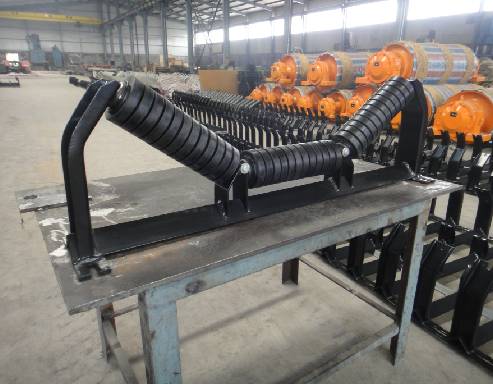 Afrikaans
Afrikaans  Albanian
Albanian  Amharic
Amharic  Arabic
Arabic  Armenian
Armenian  Azerbaijani
Azerbaijani  Basque
Basque  Belarusian
Belarusian  Bengali
Bengali  Bosnian
Bosnian  Bulgarian
Bulgarian  Catalan
Catalan  Cebuano
Cebuano  Corsican
Corsican  Croatian
Croatian  Czech
Czech  Danish
Danish  Dutch
Dutch  English
English  Esperanto
Esperanto  Estonian
Estonian  Finnish
Finnish  French
French  Frisian
Frisian  Galician
Galician  Georgian
Georgian  German
German  Greek
Greek  Gujarati
Gujarati  Haitian Creole
Haitian Creole  hausa
hausa  hawaiian
hawaiian  Hebrew
Hebrew  Hindi
Hindi  Miao
Miao  Hungarian
Hungarian  Icelandic
Icelandic  igbo
igbo  Indonesian
Indonesian  irish
irish  Italian
Italian  Japanese
Japanese  Javanese
Javanese  Kannada
Kannada  kazakh
kazakh  Khmer
Khmer  Rwandese
Rwandese  Korean
Korean  Kurdish
Kurdish  Kyrgyz
Kyrgyz  Lao
Lao  Latin
Latin  Latvian
Latvian  Lithuanian
Lithuanian  Luxembourgish
Luxembourgish  Macedonian
Macedonian  Malgashi
Malgashi  Malay
Malay  Malayalam
Malayalam  Maltese
Maltese  Maori
Maori  Marathi
Marathi  Mongolian
Mongolian  Myanmar
Myanmar  Nepali
Nepali  Norwegian
Norwegian  Norwegian
Norwegian  Occitan
Occitan  Pashto
Pashto  Persian
Persian  Polish
Polish  Portuguese
Portuguese  Punjabi
Punjabi  Romanian
Romanian  Russian
Russian  Samoan
Samoan  Scottish Gaelic
Scottish Gaelic  Serbian
Serbian  Sesotho
Sesotho  Shona
Shona  Sindhi
Sindhi  Sinhala
Sinhala  Slovak
Slovak  Slovenian
Slovenian  Somali
Somali  Spanish
Spanish  Sundanese
Sundanese  Swahili
Swahili  Swedish
Swedish  Tagalog
Tagalog  Tajik
Tajik  Tamil
Tamil  Tatar
Tatar  Telugu
Telugu  Thai
Thai  Turkish
Turkish  Turkmen
Turkmen  Ukrainian
Ukrainian  Urdu
Urdu  Uighur
Uighur  Uzbek
Uzbek  Vietnamese
Vietnamese  Welsh
Welsh  Bantu
Bantu  Yiddish
Yiddish  Yoruba
Yoruba  Zulu
Zulu belt conveyor idler design
The Design of Belt Conveyor Idlers
Belt conveyor systems are integral to various industries, providing efficient transportation of materials over long distances. One of the critical components of these systems is the idler, which supports the conveyor belt and ensures smooth operation. The design of belt conveyor idlers is essential for optimizing performance, minimizing maintenance, and enhancing the overall lifespan of the conveyor system.
Understanding the Role of Idlers
Idlers are cylindrical rollers that support the weight of the conveyor belt and the materials being transported. They are strategically placed along the conveyor’s length to prevent sagging of the belt, reduce friction, and ensure effective load distribution. The design of idlers significantly influences the performance of the entire conveyor system. Properly designed idlers contribute to lower energy consumption, reduced wear and tear on components, and increased overall efficiency.
Key Design Considerations
1. Idler Type There are various types of idlers, such as flat, trough, and pick-up idlers, each serving different purposes. Trough idlers, for instance, are commonly used for transporting bulk materials because they provide better support and containment of the load. The choice of idler type must align with the specific application and materials handled by the conveyor system.
2. Material Selection The materials used in the making of idlers must withstand harsh environmental conditions, including temperature fluctuations, moisture, and corrosive substances. Common materials include steel, rubber, and plastic. Steel is often preferred due to its durability and strength, but the use of specialized coatings can improve resistance to corrosion and wear.
belt conveyor idler design

3. Roller Diameter and Length The diameter and length of the idler rollers are crucial factors in their design. Larger diameters typically reduce friction and wear on the belt but may require more space. Conversely, smaller diameters can result in increased friction and energy consumption. The length of the roller should also correspond to the width of the conveyor belt to ensure proper support and minimize belt sagging.
4. Spacing and Arrangement The spacing between idlers is vital to effectively support the conveyor belt and its load. Ideal spacing prevents belt sagging and reduces the risk of misalignment. Typically, idlers are located every few meters, but this can vary depending on the load and belt characteristics.
5. Maintenance and Accessibility A good design should facilitate easy maintenance and inspection of the idlers. Features such as removable covers, easy access points, and modular designs can greatly simplify maintenance efforts, which is critical for minimizing downtime and operational costs.
Innovations in Idler Design
Recent advancements in technology have led to innovative designs that enhance the performance and efficiency of idlers. For instance, self-aligning idlers can automatically adjust to keep the belt centered, reducing wear and improving operational reliability. Furthermore, the integration of monitoring sensors can provide real-time data on idler performance, allowing for predictive maintenance and improved uptime.
Conclusion
The design of belt conveyor idlers plays a crucial role in the overall efficiency and effectiveness of conveyor systems. By considering factors such as idler type, material selection, roller dimensions, spacing, and maintenance accessibility, engineers can create robust idler designs that enhance performance and reduce costs. As technology continues to advance, the future of idler design will likely involve even more sophisticated solutions that further optimize conveyor performance and reliability, ultimately contributing to the efficiency of material handling across various industries.
-
Revolutionizing Conveyor Reliability with Advanced Rubber Lagging PulleysNewsJul.22,2025
-
Powering Precision and Durability with Expert Manufacturers of Conveyor ComponentsNewsJul.22,2025
-
Optimizing Conveyor Systems with Advanced Conveyor AccessoriesNewsJul.22,2025
-
Maximize Conveyor Efficiency with Quality Conveyor Idler PulleysNewsJul.22,2025
-
Future-Proof Your Conveyor System with High-Performance Polyurethane RollerNewsJul.22,2025
-
Driving Efficiency Forward with Quality Idlers and RollersNewsJul.22,2025





























